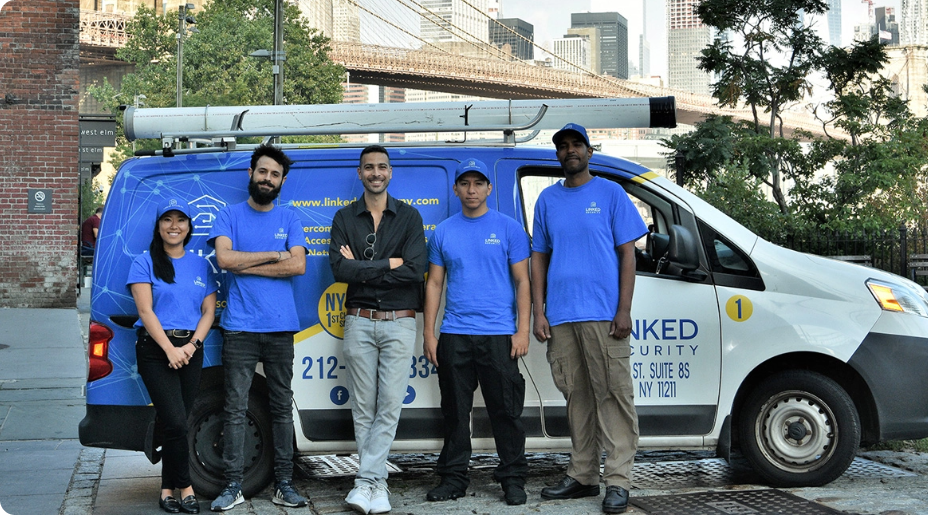Network Cabling in NYC: Installation and Maintenance Guide

In New York City, the importance of reliable network cabling cannot be overstated. From seamless connectivity to enhanced communication, efficient network cabling is the backbone of modern businesses. However, in a city where speed is key, subpar cabling can lead to costly downtime and lost opportunities. That’s where expert network cabling services in NYC come into play. By partnering with professionals who understand the intricacies of network infrastructure, businesses can ensure a contrast between uninterrupted operations and frustrating disruptions.
Key Takeaways
- Plan Carefully: Before starting your network cabling project in NYC, take the time to plan meticulously to ensure smooth installation and future scalability.
- Choose Wisely: Select the appropriate types of cables based on your specific needs and budget, considering factors like speed, distance, and interference.
- Follow Best Practices: Adhere to installation best practices to minimize errors, reduce downtime, and optimize network performance.
- Regular Maintenance: Implement a routine maintenance schedule to identify and address issues promptly, ensuring your network operates efficiently.
- Stay Updated: Keep abreast of technological advancements and consider upgrades to enhance your network’s speed, security, and reliability.
- Professional Help: When in doubt or dealing with complex setups, seek professional assistance to guarantee a successful network cabling project in NYC.
Understanding Network Cabling
Importance of Network Cabling
Network cabling is the backbone of modern communication systems, ensuring seamless data networks and reliable connectivity. It involves the installation of network cables to establish efficient connections between devices.
Structured cabling, a standardized approach to organizing network cables, is essential for supporting both data and voice communication within an organization. By following specific design and installation guidelines, structured cabling optimizes network performance and minimizes network issues.
Benefits for Businesses
For businesses in NYC, robust network cabling is paramount for maintaining operational efficiency and competitiveness. Reliable connectivity enables swift data transfer, smooth collaboration, and uninterrupted communication. With well-organized network cables, businesses can adapt to evolving technologies and scale their operations effectively.
- Efficient data transmission
- Seamless collaboration
- Scalability for future growth
Enhancing Business Operations
In the bustling business landscape of NYC, where connectivity is key, investing in high-quality network cabling is a strategic decision. It not only improves day-to-day operations but also enhances overall productivity and customer satisfaction. By prioritizing network infrastructure, businesses can stay ahead in the digital age.
Types of Cables Used in NYC
CAT5e
CAT5e cables are commonly used in NYC for Ethernet networks. They support speeds up to 1,000 Mbps and are suitable for most residential and commercial applications.
Fiber Optic
Fiber optic cables are known for their high-speed data transmission capabilities over long distances. In NYC, they are extensively used in telecommunications and internet service provider networks.
CAT6e
CAT6e cables offer enhanced performance compared to CAT5e, supporting higher data transfer rates and reducing crosstalk. They are ideal for demanding network environments in NYC.
Choosing the right type of cable is crucial for ensuring optimal network performance. CAT5e is cost-effective and suitable for basic networking needs, while fiber optic cables excel in high-bandwidth applications. CAT6e, on the other hand, provides superior performance for advanced networking requirements.
- Pros:
- CAT5e: Affordable and versatile.
- Fiber Optic: High-speed data transmission.
- CAT6e: Enhanced performance and reduced crosstalk.
- Cons:
- CAT5e: Limited speed capabilities.
- Fiber Optic: Higher installation costs.
- CAT6e: More expensive than CAT5e.
Planning Your Network Cabling Project
Key Steps
Plan: Begin by assessing your current network infrastructure and identifying areas that need improvement or expansion.
Design: Create a detailed plan specifying the types of cables needed, the layout of the cabling system, and any necessary equipment.
Budget: Determine a realistic budget that covers the cost of materials, labor, and any unexpected expenses that may arise during the project.
Importance of Proper Implementation
Proper design and implementation of cabling systems are crucial for ensuring a reliable and efficient network. Poorly installed cables can lead to connectivity issues, slow data transfer speeds, and increased downtime.
Installation Best Practices
Proper Organization
During network cabling installations, proper organization is crucial for efficiency and maintenance. Bundling cables neatly and labeling them accurately can prevent confusion and facilitate troubleshooting when issues arise.
Key Points:
- Organize cables by type (e.g., Ethernet, fiber optic) for easy identification.
- Use cable ties or Velcro straps to secure bundles and maintain a clean appearance.
- Label both ends of each cable with clear, descriptive tags to streamline future maintenance tasks.
Quality Standards Compliance
Adhering to industry standards is essential in ensuring reliable network cabling installations. The American Society of Mechanical Engineers (ASM) provides guidelines that guarantee quality workmanship and compliance with regulatory requirements.
Key Points:
- Follow ASM standards to ensure proper installation techniques and material usage.
- Regularly inspect installations to verify compliance with safety regulations and performance standards.
- Training technicians on the latest industry standards enhances the quality of network cabling projects.
Maintenance and Upgrades
Regular Maintenance
Regular maintenance of your network cabling infrastructure is crucial to ensure optimal performance. By conducting routine tests and inspections, you can identify and address any issues promptly, preventing potential downtime.
Diagnostic Support
ASM offers comprehensive diagnostic support services to help you pinpoint and resolve any network problems efficiently. Their team of experts utilizes advanced tools to perform thorough testing, ensuring that your system operates seamlessly.
Systems Upgrade
When it comes to upgrading your network cabling, ASM Integrators provide top-notch services to meet your needs. Whether you’re relocating to a new office or expanding your current setup, their professionals can handle the job with precision.
Final Remarks
You’ve learned about network cabling essentials, cable types in NYC, project planning, installation tips, and maintenance. By understanding these aspects, you’re better equipped to ensure a reliable network infrastructure for your business in New York City. Proper planning and adherence to best practices can save you time and money in the long run.
Ensure your network cabling meets the demands of your operations by staying informed about the latest technologies and industry standards. Regular maintenance and upgrades will help you stay ahead in this fast-paced digital landscape. Don’t hesitate to consult with professionals for expert advice tailored to your specific needs.
Frequently Asked Questions
What is the importance of understanding network cabling?
Understanding network cabling is crucial for ensuring efficient data transmission and network performance. It helps in identifying the right type of cables, optimizing connectivity, and troubleshooting issues effectively.
Which types of cables are commonly used in NYC for network cabling?
In NYC, common types of cables used for network cabling include Ethernet cables (Cat5e, Cat6), fiber optic cables, and coaxial cables. Each type has its own advantages in terms of speed, bandwidth, and distance capabilities.
How should one plan a network cabling project effectively?
Planning a network cabling project involves assessing current infrastructure, determining future needs, creating a detailed layout, considering scalability, and budgeting for materials and labor. Proper planning ensures a reliable and future-proof network setup.
What are some installation best practices for network cabling projects?
Installation best practices include following industry standards like TIA/EIA, using proper cable management techniques, avoiding electromagnetic interference sources, testing connections thoroughly, labeling cables accurately, and allowing room for future expansions or upgrades.
Why is maintenance and upgrades essential for network cabling systems?
Regular maintenance and upgrades are essential to ensure optimal performance, identify potential issues early on, adapt to technological advancements, enhance security measures, and extend the lifespan of the network infrastructure. It helps in preventing downtime and improving overall efficiency.




